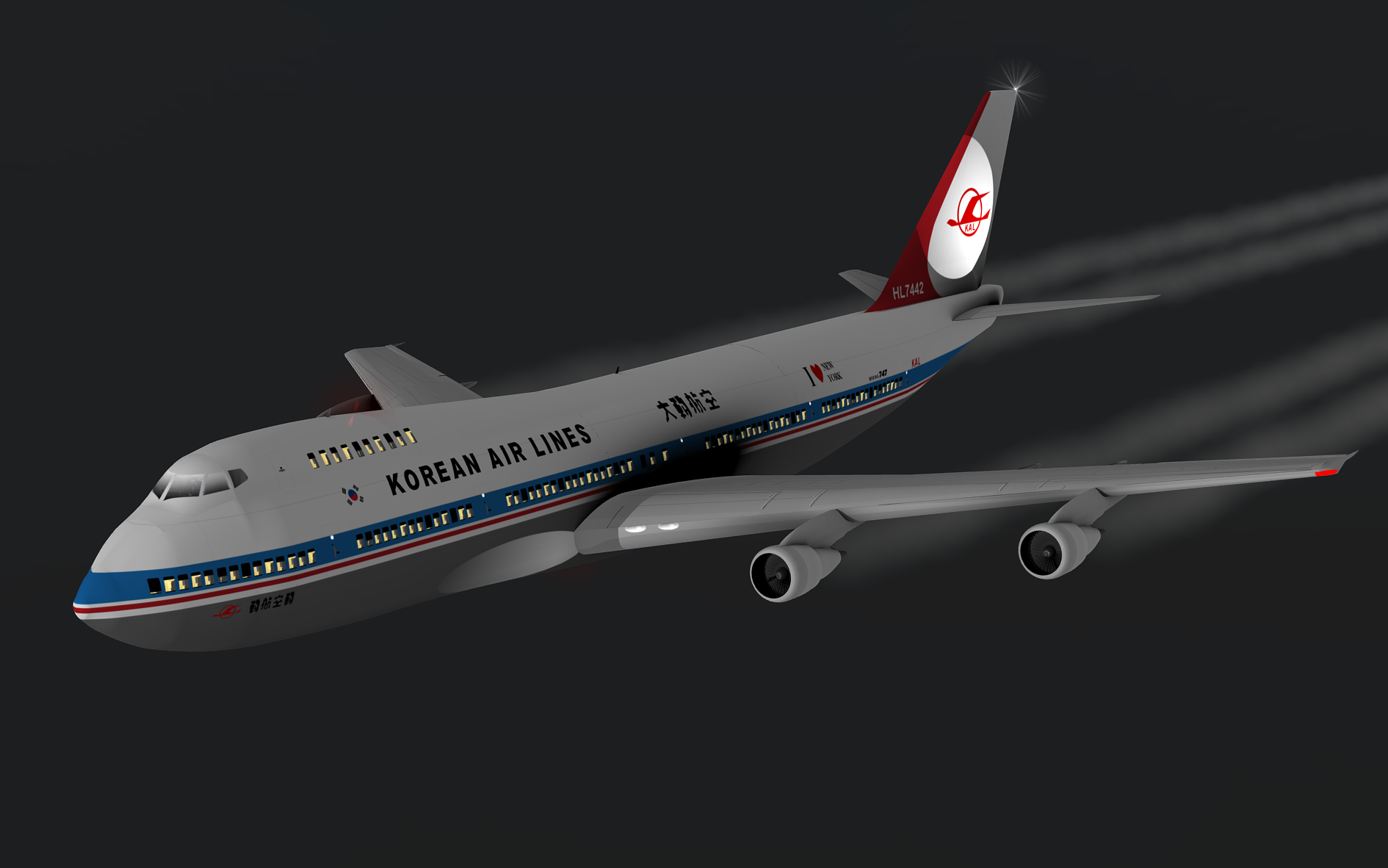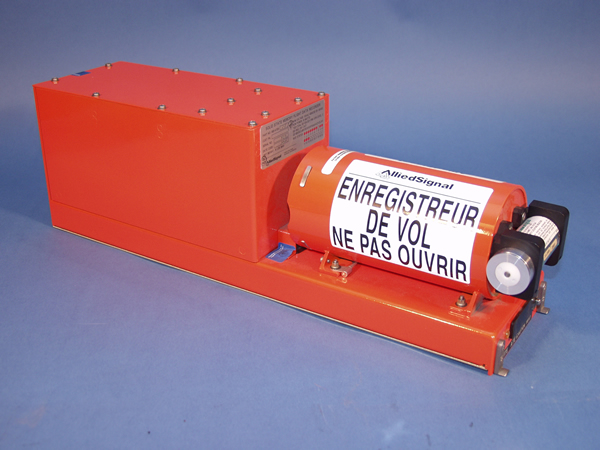|
Korean Air Lines Flight 007 Alternative Theories
Korean Air Lines Flight 007 alternative theories concerns the various theories put forward regarding the shooting down of Korean Air Lines Flight 007. The aircraft was en route from New York City via Anchorage to Seoul on September 1, 1983, when it strayed into prohibited Soviet airspace and was shot down by Soviet fighter jets. Flight 007 has been the subject of ongoing controversy and has spawned a number of conspiracy theories.Knight, p. 381 Many of these are based on the suppression of evidence such as the flight data recorders, unexplained details such as the role of a USAF RC-135 surveillance aircraft,Schultz, p. 367 or merely Cold War disinformation and propaganda. Some commentators also felt that the International Civil Aviation Organization (ICAO) report into the incident failed to address key points adequately, such as the reason for the aircraft's deviation.Daniloff, p. 304 The release of flight data recorder evidence by the Russian Federation in 1993, ten years af ... [...More Info...] [...Related Items...] OR: [Wikipedia] [Google] [Baidu] |
Horizontal Situation Indicator
The horizontal situation indicator (commonly called the HSI) is an aircraft flight instrument normally mounted below the artificial horizon in place of a conventional heading indicator. It combines a heading indicator with a VHF omnidirectional range- instrument landing system (VOR-ILS) display. This reduces pilot workload by lessening the number of elements in the pilot's instrument scan to the six basic flight instruments. Among other advantages, the HSI offers freedom from the confusion of reverse sensing on an instrument landing system localizer back course approach. As long as the needle is set to the localizer front course, the instrument will indicate whether to fly left or right, in either direction of travel. On the HSI, the aircraft is represented by a schematic figure in the centre of the instrument – the VOR-ILS display is shown in relation to this figure. The heading indicator is usually slaved to a remote compass and the HSI is frequently interconnected with a ... [...More Info...] [...Related Items...] OR: [Wikipedia] [Google] [Baidu] |
Cape Newenham Long Range Radar Site
Cape Newenham Air Force Station (AAC ID: F-05, LRR ID: A-09) is a closed United States Air Force General Surveillance Radar station. It is located west-southwest of Togiak, Alaska. The radar surveillance station was closed on 1 November 1983, and was re-designated as a Long Range Radar (LRR) site as part of the Alaska Radar System. Today, it remains active as part of the Alaska NORAD Region under the jurisdiction of the 611th Air Support Group, Elmendorf AFB, Alaska. History Cape Newenham AFS was a continental defence radar station constructed to provide the United States Air Force early warning of an attack by the Soviet Union on Alaska. A construction contract was awarded to Haddock Engineers, Ltd., on 13 June 1950. Work was started on 12 September, and considerable construction difficulties ensued. The only means of getting construction materials and supplies to the site was by barge or Navy LSTs, however this was restricted to when the sea was not frozen and had ... [...More Info...] [...Related Items...] OR: [Wikipedia] [Google] [Baidu] |
Over-the-horizon Radar
Over-the-horizon radar (OTH), sometimes called beyond the horizon radar (BTH), is a type of radar system with the ability to detect targets at very long ranges, typically hundreds to thousands of kilometres, beyond the radar horizon, which is the distance limit for ordinary radar. Several OTH radar systems were deployed starting in the 1950s and 1960s as part of early warning radar systems, but these have generally been replaced by airborne early warning systems. OTH radars have recently been making a comeback, as the need for accurate long-range tracking becomes less important with the ending of the Cold War, and less-expensive ground-based radars are once again being considered for roles such as maritime reconnaissance and drug enforcement. Technology The frequency of radio waves used by most radars, in the form of microwaves, travel in straight lines. This generally limits the detection range of radar systems to objects on their horizon (generally referred to as "line of ... [...More Info...] [...Related Items...] OR: [Wikipedia] [Google] [Baidu] |
Shemya
Shemya or Simiya ( ale, Samiyax̂) is a small island in the Semichi Islands group of the Near Islands chain in the Aleutian Islands archipelago southwest of Alaska, at . It has a land area of , and is about southwest of Anchorage, Alaska. It is wide and long. History The Russian vessel ''Saint Peter and Paul'' wrecked at Shemya in 1762. Most of the crew survived. A United States Air Force radar, surveillance, and weather station and aircraft refueling station, including a runway, opened on Shemya in 1943 and is still in operation. The station, originally Shemya Air Force Base or Shemya Station, had 1,500 workers at its peak in the 1960s. In 1956, Northwest Airlines leased Shemya Island from the U.S. government to use as a refueling station on their North Pacific route. According to Northwest's website, that made them "the first airline to operate its own airport." Northwest was operating Lockheed Constellation L-1049G model propliners on its "Orient Express" service between t ... [...More Info...] [...Related Items...] OR: [Wikipedia] [Google] [Baidu] |
USNS Observation Island (T-AGM-23)
USNS ''Observation Island'' (T-AGM-23) was built as the Mariner-class merchant ship ''Empire State Mariner'' for the United States Maritime Commission, launched 15 August 1953, and operated by United States Lines upon delivery on 24 February 1954, making voyages for the Military Sea Transportation Service (MSTS) until going into reserve at Mobile, Alabama on 9 November 1954. Title was transferred to the United States Navy on 10 September 1956 and, after conversion, the ship was renamed ''Observation Island''. On commissioning the ship was classified as the "experimental miscellaneous auxiliary" (EAG), USS ''Observation Island'' (EAG-154) supporting fleet ballistic missile development. ''Observation Island'' was the platform for the first at-sea firing of the Polaris missile in 1959. On 1 April 1968 ''Observation Island'' was redesignated as a miscellaneous auxiliary USS ''Observation Island'' (AG-154). She was the platform for first at-sea firing of the Poseidon missile in 1969.A ... [...More Info...] [...Related Items...] OR: [Wikipedia] [Google] [Baidu] |
Missile Range Instrumentation Ship
A tracking ship, also called a missile range instrumentation ship or range ship, is a ship equipped with antennas and electronics to support the launching and tracking of missiles and rockets. Since many missile ranges launch over ocean areas for safety reasons, range ships are used to extend the range of shore-based tracking facilities. In the United States, the initial tracking ships were constructed by the U.S. Army and then the U.S. Air Force to support their missile programs. They were generally built on a surplus Liberty ship or Victory ship hull. By 1964, the U.S. Navy took over all the range ships and introduced more. In some Navies, such a ship is also given the Type Designation "Vigilship" or "Veladora", with the Designation Letter "V" or Letters "VC". Missile range instrumentation ships Chinese PLA Strategic Support Force The Chinese ships were purpose built vessels for their role in the navy and the space program. * Yuanwang class ** ''Yuanwang 1'', 1977 – pres ... [...More Info...] [...Related Items...] OR: [Wikipedia] [Google] [Baidu] |
AN/SPQ-11
The AN/SPQ-11 Cobra Judy was a PESA radar found on the missile range instrumentation ship. It was used for space tracking, ballistic missiles tracking and other instrumentation. Cobra Judy was the sea component of the COBRA program for monitoring missile launches and outer space. Cobra Judy was replaced by the Cobra Judy Replacement (CJR) in April 2014. Replacement The Cobra Judy Platform, was taken out of service and stricken from the Naval Vessel Register March 31, 2014. On 31 March 2014, the Cobra Judy Replacement program, aboard reached initial operational capability (IOC). According to the Naval Sea Systems Command (NAVSEA), the U.S. Air Force also assumed operational and sustainment responsibilities for the ship. See also * *, platform for Cobra King, the Cobra Judy Replacement * Cobra Dane *Cobra Ball The Boeing RC-135 is a family of large reconnaissance aircraft built by Boeing and modified by a number of companies, including General Dynamics, Lockheed, LTV, ... [...More Info...] [...Related Items...] OR: [Wikipedia] [Google] [Baidu] |
Flight Recorder
A flight recorder is an electronic recording device placed in an aircraft for the purpose of facilitating the investigation of aviation accidents and incidents. The device may often be referred to as a "black box", an outdated name which has become a misnomer—they are now required to be painted bright orange, to aid in their recovery after accidents. There are two types of flight recording devices: the flight data recorder (FDR) preserves the recent history of the flight through the recording of dozens of parameters collected several times per second; the cockpit voice recorder (CVR) preserves the recent history of the sounds in the cockpit, including the conversation of the pilots. The two devices may be combined into a single unit. Together, the FDR and CVR objectively document the aircraft's flight history, which may assist in any later investigation. The two flight recorders are required by international regulation, overseen by the International Civil Aviation Organiz ... [...More Info...] [...Related Items...] OR: [Wikipedia] [Google] [Baidu] |
Electronic Counter Measures
An electronic countermeasure (ECM) is an electrical or electronic device designed to trick or deceive radar, sonar, or other detection systems, like infrared (IR) or lasers. It may be used both offensively and defensively to deny targeting information to an enemy. The system may make many separate targets appear to the enemy, or make the real target appear to disappear or move about randomly. It is used effectively to protect aircraft from guided missiles. Most air forces use ECM to protect their aircraft from attack. It has also been deployed by military ships and recently on some advanced tanks to fool laser/IR guided missiles. It is frequently coupled with stealth advances so that the ECM systems have an easier job. Offensive ECM often takes the form of jamming. Self-protecting (defensive) ECM includes using blip enhancement and jamming of missile terminal homers. History The first example of electronic countermeasures being applied in a combat situation took place during ... [...More Info...] [...Related Items...] OR: [Wikipedia] [Google] [Baidu] |




.jpg)

